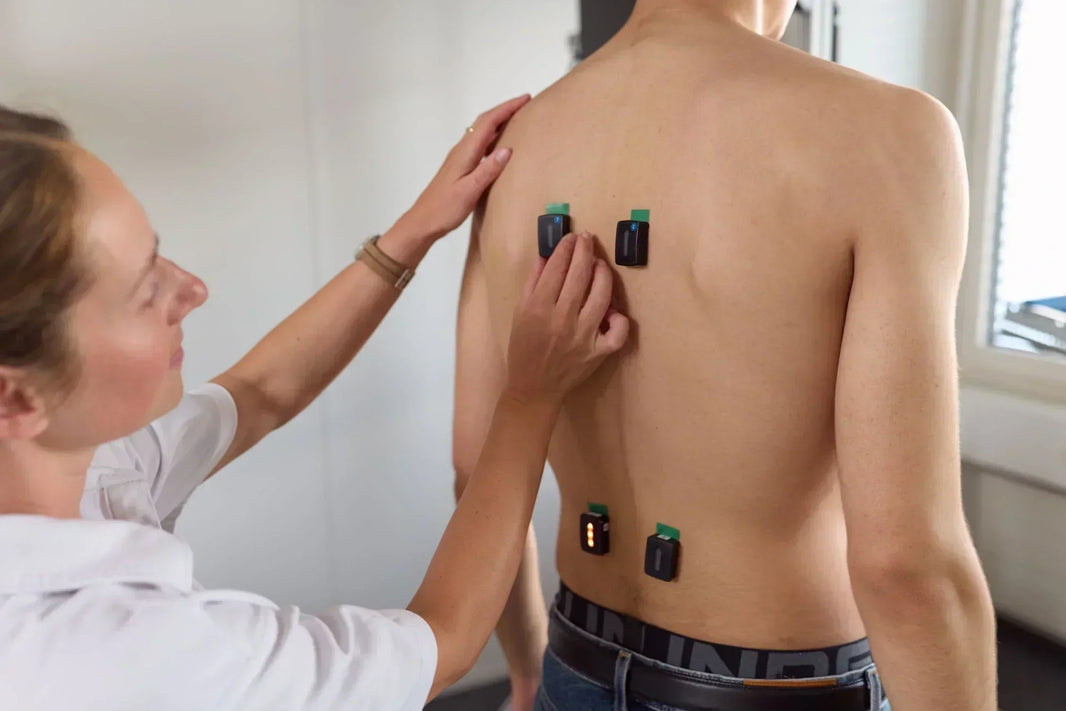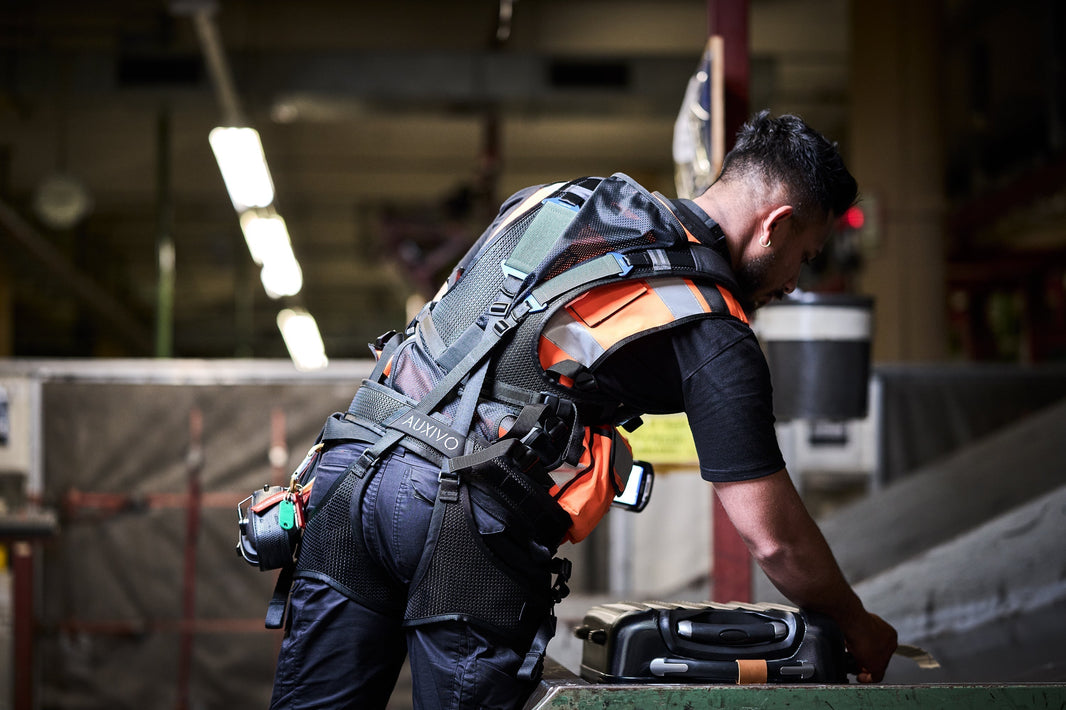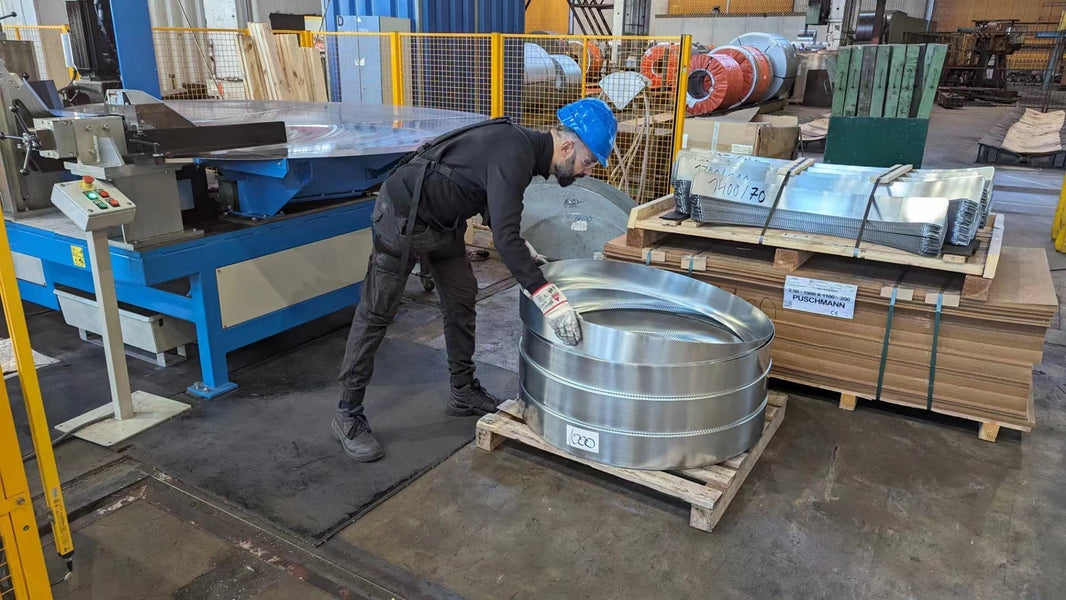In today’s fast-paced industrial landscape, innovation is often the key to staying competitive, especially when it comes to worker safety and productivity. One of the most promising advancements in this area is the use of industrial exoskeletons: wearable devices designed to support or enhance human physical performance.
From warehouse operations to construction sites, exoskeletons are gaining traction as a way to reduce fatigue, prevent injuries, and support aging workers. But while the potential is enormous, implementing this kind of technology isn’t as simple as flipping a switch.
Introducing exoskeletons into a workforce comes with unique challenges—both human and operational. However, with the right strategies, these obstacles can be turned into opportunities for lasting improvement.

Challenge 1: Resistance to Change
The Problem:
Any new technology can be met with hesitation, but when it directly impacts how workers move, lift, and perform day-to-day tasks, skepticism can be even more pronounced. Workers may worry that exoskeletons will be uncomfortable, restrictive, or a sign that management doesn’t trust their capabilities.
The Solution:
Build buy-in early. Involve workers in the evaluation process before making purchasing decisions. Host demo days, invite feedback, and let them test different models. Highlight how exoskeletons are there to support, not replace human effort.
It’s also important to emphasize that exoskeletons are designed to reduce injury risk—not to increase output at the cost of well-being. Reassure employees that safety and sustainability are the top priorities.

Challenge 2: Training and Education
The Problem:
Exoskeletons, whether passive or powered, aren’t “strap it on and go” devices. Without proper training, workers may misuse them, rendering the technology ineffective—or worse, creating new risks.
The Solution:
Invest in hands-on, task-specific training. Workers should learn how to fit, adjust, wear, and remove the devices correctly. Training should also cover when and when not to use an exoskeleton.
Don’t treat training as a one-time event. Make it part of your ongoing safety and ergonomics programs. Create quick-reference guides, refresher courses, and establish go-to contacts or champions on the floor who can help troubleshoot day-to-day issues.

Challenge 3: Workflow Disruption
The Problem:
Any change in workflow—even one with long-term benefits—can cause short-term disruptions. Exoskeletons may slightly alter how tasks are performed, require time for donning/doffing, or necessitate changes in workstations.
The Solution:
Start small. Choose a pilot group or a specific task where the benefits are clear and measurable. This phased rollout helps minimize disruption while allowing teams to fine-tune implementation.
During this period, collect feedback and make adjustments. Are workers struggling to fit into tight spaces while wearing the device? Are straps or frames snagging on tools or clothing? These insights will help refine procedures before expanding to the larger workforce.

Challenge 4: One Size Doesn’t Fit All
The Problem:
Workforces are diverse. Heights, body types, and job tasks vary widely, which means a single exoskeleton model might not suit everyone or every task.
The Solution:
Look for adjustable and modular designs that accommodate a range of users. Some exoskeleton manufacturers now offer devices in multiple sizes or with interchangeable components.
Also, tailor deployment based on job demands. For example, a shoulder support exoskeleton might be ideal for overhead assembly, while a back support model suits warehouse lifting tasks. Don’t expect every worker to wear an exoskeleton all day or across all job functions.
Customization is key—and that includes both the gear and the policy governing its use.

Challenge 5: Cost and ROI Concerns
The Problem:
Exoskeletons represent a significant investment, especially for larger teams. Management may be hesitant to greenlight the budget without clear evidence of return on investment.
The Solution:
Position exoskeletons as part of a long-term risk reduction strategy. Musculoskeletal disorders (MSDs) are among the most common—and costly—workplace injuries. Reducing even a fraction of these incidents can save thousands in medical claims, lost time, and reduced productivity.
During your pilot phase, track data related to injury reports, absenteeism, fatigue levels, and task efficiency. Even subjective feedback from workers (e.g., “I’m less sore at the end of my shift”) can be valuable in building a business case.
Also consider working with your insurance provider or workers’ compensation carrier. Some may offer incentives or discounts for proactive safety measures like exoskeletons.

Challenge 6: Maintenance and Hygiene
The Problem:
Like any piece of equipment, exoskeletons require maintenance. Sweat, dirt, wear-and-tear—these factors can shorten lifespan or create hygiene issues, especially in shared-use environments.
The Solution:
Set up a maintenance and cleaning protocol from day one. Choose models with easily removable and washable components, and consider assigning devices to individuals when possible to minimize cross-contamination.
Also train workers to inspect their gear regularly. Simple daily checks can prevent bigger issues down the line and keep the devices functioning properly.

Challenge 7: Measuring the Right Outcomes
The Problem:
If you only measure traditional productivity metrics, you might miss the full impact of exoskeleton adoption. Improvements like reduced fatigue or improved posture don’t always show up on spreadsheets.
The Solution:
Take a holistic approach to metrics. Track both quantitative data (injury rates, absenteeism, lifting frequency) and qualitative feedback (comfort, satisfaction, perceived strain). Ergonomic assessments, surveys, and wearable tech data (if available) can provide a clearer picture.
Over time, these measurements help you make smarter decisions about scaling up, changing models, or adjusting policies.

Final Thoughts: A Marathon, Not a Sprint
The journey to exoskeleton integration isn’t without bumps, but with thoughtful planning and a collaborative mindset, the rewards are worth the effort. Reduced injuries, improved worker morale, and a forward-thinking safety culture are all within reach.
The key is to see exoskeletons not as a silver bullet—but as one powerful tool in your ergonomics and safety toolbox. A successful rollout depends on listening to your team, adapting to their needs, and treating implementation as a process, not a one-time event.
Start small, stay flexible, and build a strong foundation. The future of work might not be robotic—but it just might be a little more exoskeletal.
Related article : IronHand: The World's First Powered Soft Hand Exoskeleton







